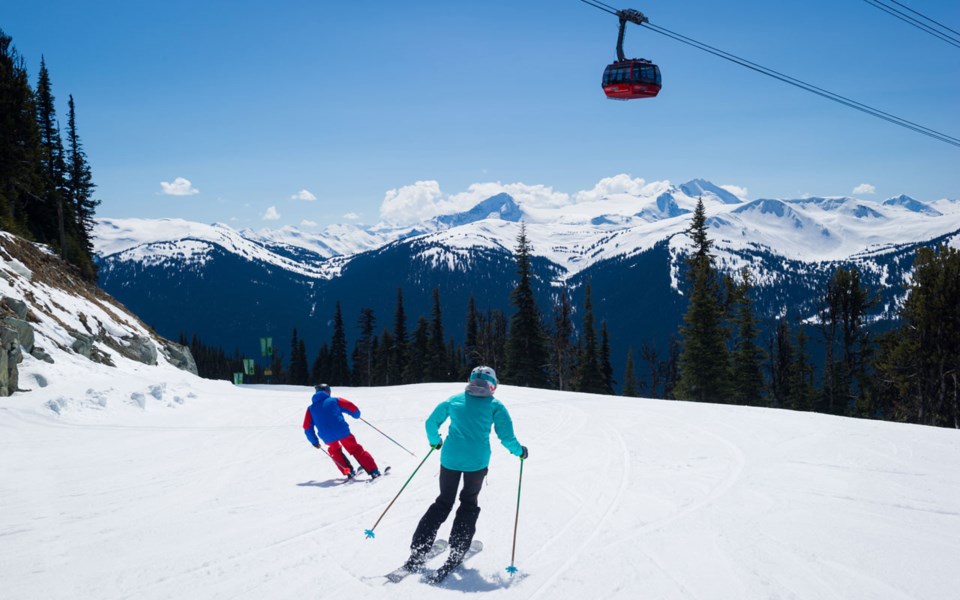Protect Our Winters Canada (POW) is teaming up with ski resorts around the world to amplify the voices advocating for climate-change solutions.
Last week, in a virtual conference led by POW Canada, climate-change experts, and ski-resort moguls, all gathered to discuss what ski resorts can do on the front lines of the fight against rising global temperatures.
“[POW is] a passionate community of outdoor enthusiasts, professional athletes and industry brands uniting to advocate for policy solutions to climate change. We believe our love of nature demands our participation in the fight to protect it,” said Izzy Lynch, program director at POW Canada.
“We want all communities and outdoor playgrounds to be healthy, safe and resilient to a changing climate. We want a future where we’ve transformed our economy and energy systems and cut our carbon emissions in line with science-based targets that the world agreed to in the Paris Climate Agreement.”
According to Lynch, to reach its goal POW Canada supports a handful of policies that it believes are the most important in the fight against climate change. Those policies include “putting a federally set price on carbon” to reduce emissions, getting Canada’s banks and pension funds on board to lead the way toward “fossil fuel divestment” and “conserving, restoring and managing ecosystems” to find nature-based solutions.
The conference couldn’t have come at a more perfect time, as most of the country was in the middle of a historic heat wave that served as an “unfortunate reminder that we don’t have to wait decades in the future for climate change to impact our lives and businesses,” according to POW Canada board member and executive director of the Climate Change Institute at the University of Waterloo, Dr. Dan Scott.
“A high-emission future does represent a major risk to the Canadian ski industry. That’s not the future we want to end up with. Regardless of which emissions path we end up on, all ski areas are going to have to adapt one way or the other for changes in their climate that they have to work with,” he said.
“Most of the Canadian ski tourism [industry], can be made compatible with a net zero economy of 2050. And we need to tell that story so that governments, investors, communities and our public, know we can be part of that solution and be part of the future tourism economy.”
Pique reached out to Whistler Blackcomb, which isn’t part of POW Canada’s resort alliance initiative, for an update on its commitment to lowering emissions. Vail Resorts replied in an emailed statement, in which it said it was committed to fighting climate change through its “Commitment to Zero” program that is operating at all 37 Vail Resorts-owned ski resorts.
“At Vail Resorts, we’re committed to achieving a zero net operating footprint across all 37 of our resorts by 2030,” said the statement.
“And, across the company, we’ve made significant progress. We’ll be 93 per cent powered by renewable electricity by 2023 and recently reached our 50 per cent waste diversion milestone, nearly a year ahead of schedule.”
According to Auden Shendler, senior vice president of sustainability at Aspen Snowmass Ski resort, one example of how they are moving forward in reducing emissions was the building of a completely electric-run, four-storey employee-housing project that engineers didn’t think was possible in cold climates.
“When we did this project engineers would say, ‘Oh, you can’t use heat pumps in cold climates, that’s the technology.’ And we say, ‘Yeah? We did it already,’” he said. “So, we’re trying to do that next in Mammoth. We’re going to build a hotel that we think we can do all electric and geothermal.”
However, all the experts agree that one example of an emission-reducing plan or technology doesn’t move the needle much. Instead, a collaborative effort is needed by all ski resorts to succeed in the goal of a net zero emissions future.
“One company alone can’t solve the climate crisis; it’s through ongoing collaboration that, together, we’ll have the most impact on protecting and preserving the great outdoors,” said Vail Resorts’ statement on the Climate Collaborative Charter it signed with the three other largest-resort operators in North America.
“At Vail Resorts, we’re proud of the substantial progress we’ve made toward achieving a zero net operating footprint across our resorts by 2030. Now, we look forward to partnering with these passionate leaders, and the entire industry, to leverage our progress and support many others on the same journey.
“As a company rooted in the great outdoors, we have a special responsibility to protect the places we love. Through ongoing collaboration across our resorts and innovative solutions, we’ll achieve our bold goal.”

